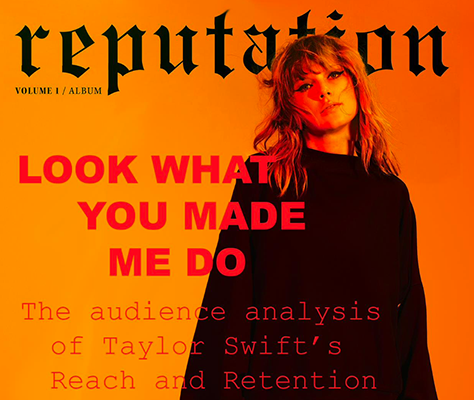Start Here: ReadAboutAI.com is a Timesaver
You’re Busy. AI is Moving Fast
Artificial Intelligence (AI) is transforming business — as profoundly as electricity, the automobile, the internet, and the smartphone did in their time. But with so much noise and so little time, staying informed can feel overwhelming — especially when you’re leading a company.
ReadAboutAI.com exists to fix that. We scan, sift, and summarize — so you don’t have to.
What You’ll Find Here
- AI updates tailored for small and mid-sized business leaders
- Clear, concise executive summaries of top articles and trends
- A curated AI Glossary for staying terminology-savvy
- Summaries of must-know books, videos, podcasts, and corporate AI use cases
- Historical context since ChatGPT’s launch in 2022
No fluff. No long reads. Just essential info, with links if you want to dig deeper.
Who’s Behind This
Terry N., writing as Mitsuo. I earned my Master’s in Communications from California State University, Fullerton, where I researched Ethical AI and Corporate Accountability, for the Master’s Thesis.
ReadAboutAI.com is the real-world continuation of that work — now built on WordPress and hosted on AWS LightSail for growth and stability.
How We Curate
Every day, we scan trusted sources like:
- WSJ, NYT, LA Times, The Economist, Reuters, WaPo, Forbes, The Atlantic, The New Yorker
- AI podcasts, expert YouTube channels, and newsletters
- Top AI influencers and corporate strategy updates
We filter the noise and deliver what matters — directly to business leaders who need quick insights to stay ahead.
Ready to Stay Ahead?
Check back weekly, or subscribe for future updates. Stay informed. Stay competitive. Lead with confidence.

Terry N., writing as Mitsuo. I earned my Master’s in Communications from California State University, Fullerton, where I researched Ethical AI and Corporate Accountability, for the Master’s Thesis.
email: mitsuo@readaboutai.com
About ReadAboutAI.com
At the heart of ReadAboutAI.com is a deep commitment to understanding how technology, media, and human behavior intersect to shape the business landscape. My academic work reflects this focus, combining research on the ethical communication of artificial intelligence in corporate America with an exploration of how cultural icons like Taylor Swift masterfully manage media narratives and audience engagement.
These two seemingly different case studies share a common thread: the power of messaging, perception, and trust in building resilient brands—whether for tech giants or global entertainers. Both offer valuable insights for business leaders navigating today’s fast-moving information environment.
Below are two executive summaries that highlight key findings from this research.
Executive Summary: Thesis May 28, 2025
Ethical AI in US Newspaper Coverage: Media Framing and Corporate Accountability.
Executive Summary
Title: Ethical AI in U.S. Newspaper Coverage: Media Framing and Corporate Accountability
Author: Terry M. Nakamura
Degree: Master of Arts in Mass Communications Research and Theory
Institution: California State University, Fullerton (Spring 2025)
DOI: 10.5281/zenodo.15368954
Keywords: Artificial intelligence, ethics, framing, corporations, accountability, journalism
🎯 Purpose
This thesis explores how U.S. newspaper media cover ethical issues in corporate AI development, emphasizing how media framing influences public perception and corporate accountability. Drawing on agenda-setting and framing theories, the study investigates whether news outlets inform the public about AI-related harms or instead reinforce corporate narratives that minimize risk.
🧪 Methodology
A mixed-methods approach was employed:
- Quantitative analysis of 14,637 newspaper articles published in 2024 to track frequency of ethical themes.
- Qualitative analysis of a 366-article sample to examine tone, framing, and depth of ethical critique.
🔍 Key Findings
- Underreported ethics: While issues like privacy, risk, and job displacement appeared, core principles like transparency, justice, and corporate accountability were rarely emphasized.
- Positive bias: Media often framed AI as an economic driver, downplaying systemic risks or harms.
- Limited watchdog journalism: Journalists faced structural barriers, including lack of access, tech-media partnerships, and corporate influence, which weakened critical reporting on AI ethics.
- Ethical dilution: Concepts like beneficence, nonmaleficence, autonomy, justice, and explicability were largely missing or superficially applied in coverage.
🧭 Theoretical Framework
- Agenda-setting theory was used to understand how media prioritize certain AI topics over others.
- Framing theory explored how journalists shape public perception through tone, language, and attribution of responsibility.
- Corporate social responsibility (CSR) was examined through Carroll’s Pyramid and CSR 2.0 to assess corporate communication on ethical AI.
📰 Media Dynamics
- Media roles as “informers” and “watchdogs” are compromised by tech-industry entanglements.
- Cases of “media capture” and “ethics bluewashing” show how AI companies influence narratives to deflect regulatory pressure.
📈 Implications
- For journalism: Ethical AI coverage must be independent, well-sourced, and highlight corporate responsibility.
- For corporations: CSR messaging must move beyond superficial ethics to operational transparency.
- For the public: Media literacy and policy interventions are needed to counteract agenda manipulation.
📌 Recommendations
- Strengthen investigative journalism on AI ethics.
- Develop newsroom guidelines for covering AI-related corporate harms.
- Push for greater transparency in media-tech partnerships.
⚠️ Limitations
- Media coverage analyzed was limited to U.S. newspapers in 2024.
- Did not measure audience reception or influence directly.

Look What You Made Me Do: The Audience Analysis of Taylor Swift’s Reach, Retention and Mastery of Messaging, A Term Paper.
Key Success Factors Behind Taylor Swift’s Billion-Dollar Business
Strategic Narrative Control:
Taylor Swift consistently manages her public image and brand by controlling messaging across albums, social media, and public appearances. She turns setbacks—such as public feuds and ownership disputes—into business opportunities through narrative reinvention, including the high-profile re-recordings of her earlier albums (“Taylor’s Versions”).
Audience-Centric Engagement:
Swift treats her fanbase not as passive consumers but as active collaborators. Through “Easter eggs,” interactive media strategies, and multi-platform storytelling, she fosters deep emotional investment, brand loyalty, and viral fan engagement, driving both attention and revenue.
Authenticity and Relatability:
Her success is anchored in maintaining authenticity. Self-disclosure, emotionally resonant songwriting, and strategic vulnerability (sharing personal milestones and challenges) create strong parasocial relationships, making fans feel personally connected to the brand.
Innovative Monetization and Diversification:
Swift has mastered diversification—extending her brand through sold-out global tours, concert films, exclusive merchandise, and streaming content. She also pioneered artist-friendly business practices by reclaiming her masters and directly monetizing her fandom through limited editions, partnerships, and event-driven releases.
Resilience and Reinvention:
Facing multiple career crises, Swift has repeatedly pivoted her image, sound, and marketing approach. Her ability to transform reputational risks into commercial wins has sustained her relevance and profitability over two decades in an industry known for short-lived careers.
✅ Business Takeaway:
Taylor Swift’s empire illustrates how authentic storytelling, community activation, and brand control can build resilience, deepen customer loyalty, and unlock multiple revenue streams—principles applicable to entrepreneurs, executives, and brand builders across industries.
📌 Calls to Action for Executives Inspired by Taylor Swift’s Business Playbook
1. Control the Narrative—Proactively Manage Brand Reputation
✅ Implement consistent messaging across all channels (social media, press, internal comms).
✅ Be ready to pivot and frame challenges as opportunities to showcase resilience and values.
Example: Swift transformed public backlash into the reputation album, reshaping the narrative on her own terms.
2. Foster Active Audience (or Customer) Engagement
✅ Create interactive experiences that turn passive customers into active participants.
✅ Use storytelling, behind-the-scenes content, and subtle “easter eggs” to deepen engagement.
Example: Swift’s use of cryptic messages and fan theories keeps her audience emotionally invested and returning for more.
3. Build Authentic Connections—Humanize Leadership and Brand
✅ Share authentic stories that highlight challenges, growth, and values.
✅ Develop direct-to-consumer touchpoints to foster a sense of community and accessibility.
Example: Swift’s honest lyrics and direct fan communications build deep loyalty and trust.
4. Innovate Revenue Streams Through Diversification
✅ Identify opportunities to extend the brand into new markets, products, or experiences.
✅ Use data and audience insights to drive product innovation and cross-platform strategies.
Example: Swift’s Eras Tour, concert film, merchandise, and re-recorded albums create multiple income streams from one core product: her music.
5. Gamify Engagement—Encourage Curiosity and Participation
✅ Introduce small, fun elements that spark curiosity, reward discovery, and encourage customer sharing.
✅ Build anticipation into marketing cycles to increase buzz and repeat engagement.
Example: Swift’s hidden messages and clues make album releases an immersive, shareable experience.
6. Prioritize Ownership and IP Control
✅ Evaluate business models for ownership of core assets, intellectual property, and data.
✅ Take proactive steps to secure ownership or negotiate more favorable terms.
Example: Swift’s re-recording of her early albums set a new industry standard for artist ownership.
These calls to action can be applied to:
✔ Brand management
✔ Customer engagement
✔ Product innovation
✔ Reputation strategy
✔ Revenue diversification
✔ Leadership positioning
